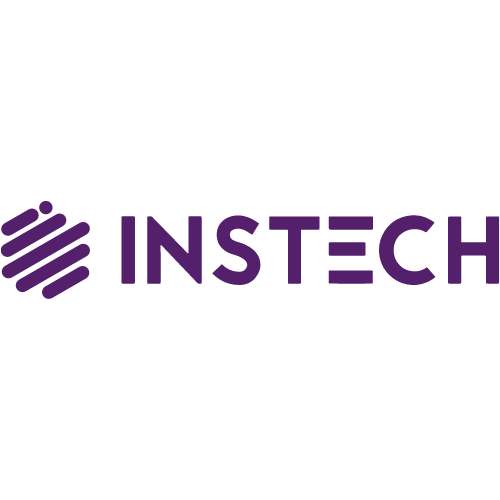We Looked recently at “The Modernisation Conundrum” facing brokers and insurers looking to upgrade or replace their administration systems. In this article, we consider some of the alternatives to changing your policy or broker administration systems.
With modernisation of the insurance market in London upon us, many companies are running with multiple legacy policy and broker administration systems, and the cost of full digital transformation can be daunting. However, low code and no code wrapper technology provides a powerful and cost-effective solution if, like some companies, full-blown change is just not a financial option. By automatically integrating these systems and reducing manual maintenance costs, these technologies enable insurers and brokers to improve service delivery, accelerate product launches, and make the most of their investments.
What Is Wrapper Technology?
Wrapper technology can integrate applications into one unified system, allowing all of your insurance processes to be managed via a single interface, whilst retaining the security features within each individual policy administration system. This eliminates the need to manually enter data or switch between multiple systems, saving time and money while improving efficiency. With less manual effort required, your team can focus on more important tasks like client service, product development and innovation. Low code or no code wrapper technology is a great solution for quickly and effectively building enterprise applications.
Is Wrapper Right For Me?
Of course there are certain circumstances where low code or no code wrapper technology may not be the best solution for an insurance policy administration system. Some of these situations include:
- If your company has specific security requirements that require an intricate level of custom coding to ensure compliance and control.
- If the application requires complex integrations with third-party systems and data sets (more likely if the technology in use is old).
- If the application needs robust rule engine capabilities that are beyond what is available in a pre-built low code environment.
- If the project timeline is too short to fully leverage a low code platform (although the converse of this is that time to change on low code will always by faster than policy or broker administration system configuration changes).
- If the company doesn’t have access to experienced developers who can manage the platform’s complexities (again, older technology has a reduced number of people who understand the technology).
In these cases, it may be more beneficial to opt for a more traditional development approach using custom coding rather than relying on a low code or no code wrapper technology. It might be that with marginal configuration your existing policy or broker administration system can deliver that support.
The Benefits Of Wrapper Technology Solutions
If however your business is suitable for wrapper technology, Low Code/No Code solutions enable non-technical staff to quickly develop applications without needing to understand coding or development skills. This means that:
- multiple processes within the insurance policy administration system can be automated;
- reduced manual effort is required;
- automation leads to fewer errors and increased accuracy;
- customised user interfaces can be developed with drag-and-drop tools, simplifying the creation of user-friendly solutions that make it easier for customers to navigate their own policies quickly and efficiently;
- development time is significantly reduced, with system configuration changes that needed 6, 12 even 18 months of effort to develop replaced by smart technology that can be launched in weeks.
This technology offers a great opportunity for insurance companies and brokers to streamline their operations and better meet the demands of their customers in an ever-changing digital world. Insurance practitioners have long been searching for ways to improve their policy or broker administration systems. Wrapper technology offers that nirvana for many.
Low code and no code wrapper technology can be incorporated into an insurance and broker policy administration system when speed, cost, and agility are key objectives. It can be used in situations when the existing policy or broker admin system has become outdated or inefficient, or when new features are needed to keep up with changing customer needs and market trends. Low code and no code wrapper technology allow for rapid development of custom applications that are tailored to the specific needs of an insurance or broker policy administration system. This allows for faster implementation of certain activities or processes within the system.
The technology also reduces the cost associated with building out a custom IT infrastructure from scratch, as well as the cost associated with hiring dedicated software engineers to develop a custom solution. While there are clear advantages to leveraging this type of technology, careful consideration must be given to the complexity of the setup, the risk of unintended consequences when making changes and the level of training required for users. The key is to ensure that any system utilising this technology is configured in such a way as to ensure maximum flexibility and scalability, while also minimising risk. Finally, low code and no code wrapper technology allow for greater agility in the development process, allowing for quicker iterations and adjustments along the way.
Conclusion
Insurers and brokers must take a comprehensive approach when evaluating these new technologies. They should assess their business needs, consider the complexities of the system and any changes that may be required, as well as taking into account technical aspects like cost, scalability and performance. They should also consider external factors such as customer feedback, market trends and the evolution in market-wide solutions, such as the change coming to London Market participants with the Blueprint Two programme.
By taking all these factors into consideration, insurers and brokers will be able to make well-informed decisions about whether or not to utilise low code and no code wrapper technology in their policy administration systems as an alternative to changing the entire system of record. Moreover, insurers must consider the potential security risks associated with such technology and ensure they have adequate safeguards in place before deciding if implementation is a viable option. The FCA and PRA rules on Operational Resilience and Outsourcing are also a factor to consider.
If you are considering using wrapper technology within your business as a solution to upgrading your policy administration systems and would like to discuss the options and suitability for your business, please do speak with the author or your usual contact at ICSR.
Related Articles
Event: London Market Reform – Why Embracing BluePrint Two Makes Sense
Please join us for a market briefing on Thursday 20th April when we look at the impact of Blueprint Two London market reforms on insurance companies and brokers writing and placing insurance risks in the London subscription market.
The Modernisation Conundrum
For insurance companies and brokers, policy and broker administration systems are the software platforms that power their business. Lance Grant looks at the process of change to these systems.











